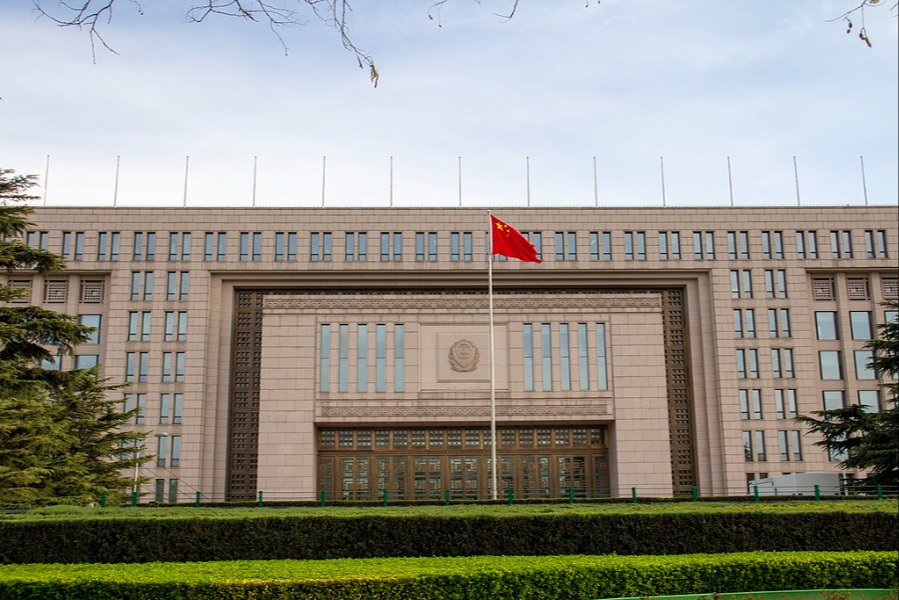Iran Sanctions 101: A Historical Primer
Last week, a harsh new set of Iran sanctions legislation sailed through the Senate foreign relations committee by a vote of 18-4. The legislation, written and introduced by Senators Mark Kirk and Robert Menendez, is post-dated for June to serve as a sort of Damocles sword, slapping new restrictions on Iranian industry and closing loopholes in existing sanctions if Iran fails to sign a deal before then.
Published by The Lawfare Institute
in Cooperation With

Last week, a harsh new set of Iran sanctions legislation sailed through the Senate foreign relations committee by a vote of 18-4. The legislation, written and introduced by Senators Mark Kirk and Robert Menendez, is post-dated for June to serve as a sort of Damocles sword, slapping new restrictions on Iranian industry and closing loopholes in existing sanctions if Iran fails to sign a deal before then. Despite its easy passage through committee, the legislation will likely remain stalled until late March, as Senate Democrats recently agreed to withhold their support out of deference for the president’s diplomatic efforts until March 24th.
However, the Kirk-Menendez bill represents only the latest round in a decades-long series of economic sanctions imposed by both president and Congress on the Islamic Republic of Iran. As the P5+1 (the group of six countries leading the negotiations) and Iran hurtle toward either a deal or a breakdown in negotiations, it’s worth reviewing the sanctions that are already in place.
Iranian Terrorism and First Sanctions
The first sanctions imposed on Iran actually had nothing to do with an Iranian nuclear program, but instead designed to punish the Islamic Republic for acts of terrorism and belligerency against the United States. These initial sanctions were also imposed entirely by executive order, under authority granted to the president by general statutes like the Trading with the Enemy Act and the International Emergency Economic Powers Act, but decided on and issued at the sole discretion of the president.
Sanctions against Iran began in November 1979, after the storming of the embassy and seizure of American diplomats in Tehran. As the crisis unfolded, President Jimmy Carter declared a national emergency and used his statutory power to unilaterally freeze all Iranian government and Central Bank assets. Over the coming year, President Carter would expand these initial sanctions into an embargo on nearly all transactions with Iran—an embargo that he ultimately revoked on January 19, 1981 after the release of the Tehran hostages.
After Iranian attacks on US ships during the Iraq-Iran War, the Carter-era embargo was reinstated on October 29, 1987 by President Ronald Reagan (this time under authorities given to the president by Section 505 of the 1985 International Security and Development Cooperation Act), who once again ordered that “no goods or services of Iranian origin may be imported into the United States.” This order, implemented under the Iranian Transaction Regulations, continues in force until today.
Iran Begins its Nuclear Program—the Sanctions Deepen
In the early 1990s, President Bill Clinton determined that Iran not only was continuing its support for terrorism abroad, but had also began an active pursuit of a nuclear weapon. So from 1995 onward, he imposed—again through a series of executive orders—a significant tightening of the already existent American sanctions regime. Under the Clinton orders, all US persons were prohibited from entering into contracts facilitating the “overall supervision and management responsibility for the development of petroleum resources located in Iran,” and from engaging in transactions “in a third country undertaken with knowledge or reason to know” that transacted goods or services would be headed to Iran. These restrictions have intensified in the last decade, as successively harsher executive orders have continued on through the administration of President Obama. In 2012, for instance, President Obama significantly expanded the list of specific groups and institutions subject to sanction, and issued new sets of federal regulations to impose them.
Enforcement of the Executive Orders
Under the International Emergency Economic Powers Act, there are both civil and criminal penalties for violation of an Executive order prohibiting trade for national security reasons. Both are steep: Civil penalties can reach up to twice the value of the violative transaction (or $250,000, whichever is greater), and criminal penalties can include a fine of $1 million and a prison term of up to 20 years. Additional penalties are also possible for related crimes: for instance attempting to conceal the avoidance of the sanctions constitutes its own crime, as does engaging in a financial transactions with a government while “knowing or having reasonable cause to know” that a country is designated as a sponsor of terrorism.
Congress Steps In
After decades of exclusively executive action, in 1996 Congress stepped in with direct sanctions legislation of its own. The Iran and Libya Sanctions Act mandated sanctions against foreign investment in the Iranian petroleum sector— for the first time creating sanctions that a president couldn’t unilaterally sweep away by executive order. Now under law, the president must impose some combination of a variety of sanctions (including denial of export licenses, denial of loans, restrictions in dealing with US bonds, a ban on procurement deals with the US government) on anyone who makes large investments that “directly and significantly contributed to the enhancement of Iran's ability to develop petroleum resources of Iran.” The law has been amended and updated a number of times, including most recently with another major piece of legislation, Comprehensive Iran Sanctions, Accountability, and Divestment Act of 2010.
Under this later legislation, the president has been further instructed to sanction anyone who provides goods or services to Iran for the development of its domestic petroleum resources or to facilitate the import of refined petroleum. Economic sanctions were tightened, revoking a prior authorization to import certain food products and carpets from Iran. Legislation significantly expanded the sanctions available to the president with which to punish foreign companies who deal with Iran—these tools now include issuing prohibitions on loans from private US banks, financial transactions through US jurisdictions, or transactions with respect to property in US jurisdiction. CISADA also included mandatory sanctions targeting foreign banks and financial institutions that facilitate transactions not just connected to Iran’s WMD program and support for terror, but also the activities of persons and institutions designated by the US and UN Security Council. These authorities have allowed the US to cripple Iranian access the global financial markets—especially when accompanied by (more limited) international sanctions required by the United Nations Security Council.
The Current Sanctions Regime and the Joint Plan of Action
Under current law:
- All imports from Iran—excepting personal affects—into the United States are banned. US persons may not import, and may not provide financing from imports.
- Unless explicitly licensed by Treasury’s Office of Foreign Assets Control, all exports may not be supplied directly or indirectly to Iran or the government of Iran. This ban includes US persons serving as brokers for foreign exports that benefit Iran.
- US persons, in and outside the United States, and institutions are prohibited from dealing or brokering transactions related to goods or services of Iranian origin.
- Investments in Iran or property controlled by its government are prohibited. US banks are generally forbidden from processing transfers that involve Iran, even if they originate and end with non-Iranian foreign banks. US banks are also prohibited from servicing accounts controlled by the Iranian government or related banks.
- Any trade of Iranian oil and petroleum products, or facilitating for activity that would benefit the Iranian oil industry, is forbidden.
- US persons are prohibited from facilitating transactions by subsidiaries or foreign persons that would themselves be forbidden to US persons.
Yishai Schwartz is a third-year student at Yale Law School. Previously, he was an associate editor at Lawfare and a reporter-researcher for The New Republic. He holds a BA from Yale in philosophy and religious studies.





